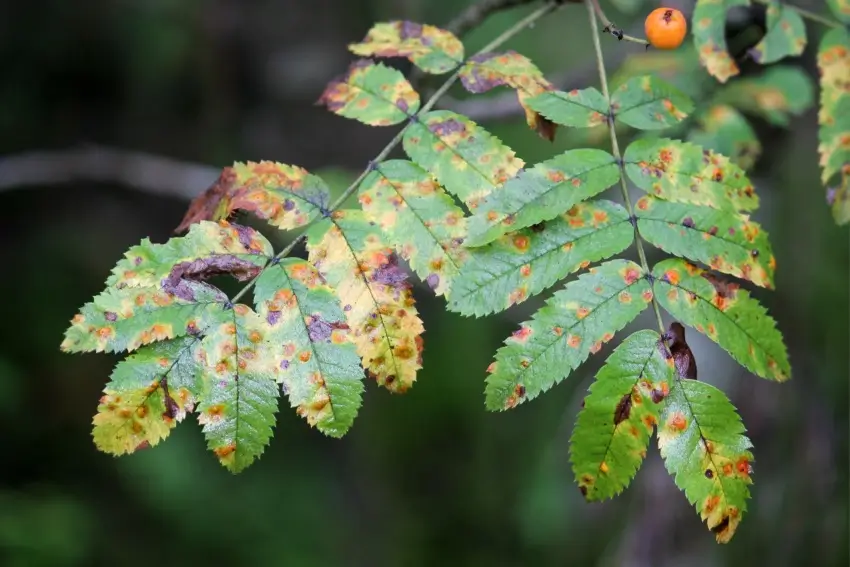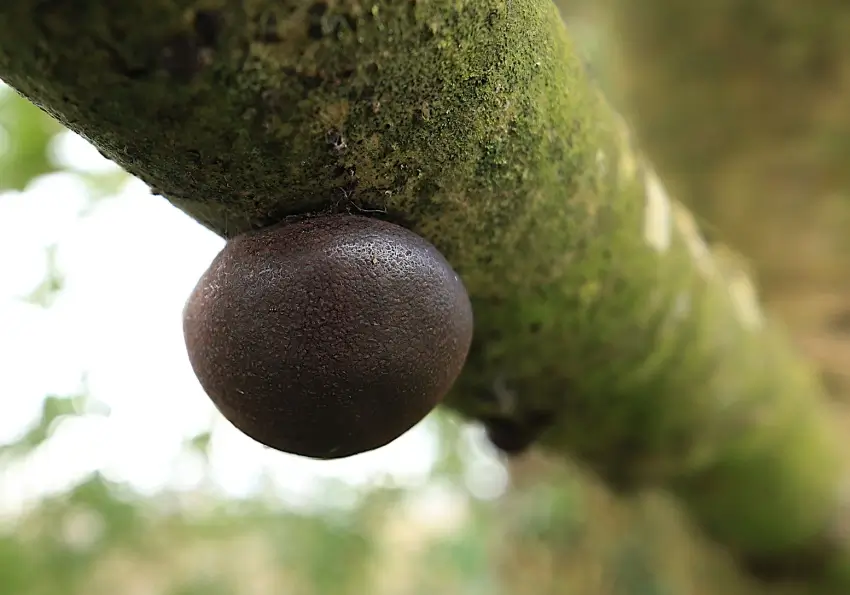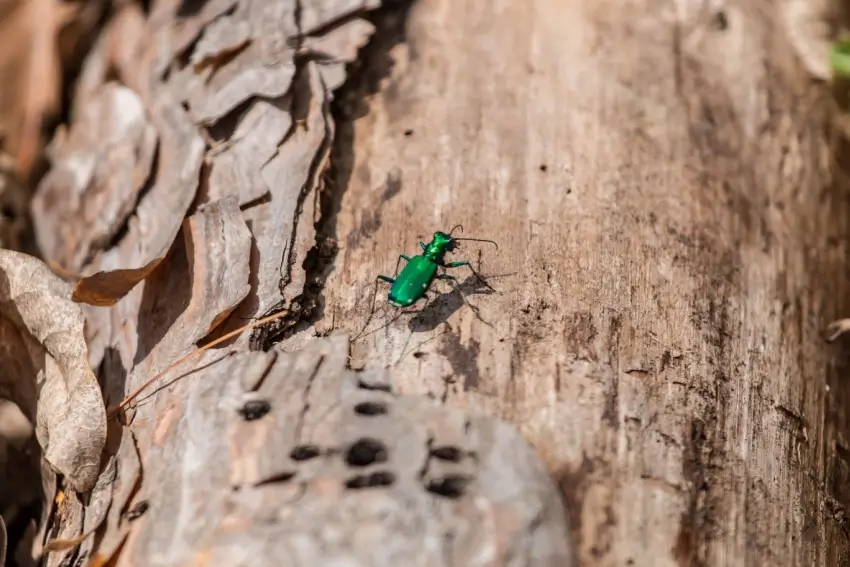
Ash trees in Canada face several diseases that threaten their health and longevity. The Grounds Guys highlight key issues and solutions for maintaining healthy ash trees.
|
Ash trees, known for their gorgeous foliage, strong wood, and versatility, are a common sight in Canadian landscapes. They provide excellent shade and are often used as ornamental trees in landscaping projects. Unfortunately, in recent years, ash trees have faced a number of challenges, including ash tree disease and invasive ash tree pests.
If ash trees are part of your property, understanding the most common ash tree diseases and pests is crucial to detecting threats early, managing them quickly, and protecting these lovely giants on your property.
Table of Contents:
What Are the Signs of Ash Tree Disease?
Part of being a good tree steward is actively monitoring your ash trees. The earlier you notice the problem, the more quickly you can take action. Fast and early intervention could make the difference between saving a tree or watching the disease or pest infestation spread throughout your landscape. Look for these ash tree disease symptoms as well as indicators of pest infestations:
- Leaf discolouration: Many ash tree diseases cause changes in leaf colour. Look for yellowing, browning, or spotting of leaves.
- Premature leaf drop: Shedding leaves earlier than usual is often a sign of stress or disease.
- Cankers: Sunken dead areas on the bark of a tree’s trunk or branches are known as cankers and can be caused by fungal infections or mechanical damage.
- Dieback: The gradual death of branches, starting at the tips and moving inward, is called dieback and is a sign of certain fungal diseases or environmental stressors.
- Fungal growth: If you notice mushrooms or fungal growths on the trunk, branches, or roots of a tree, that’s a clear sign of advanced fungal disease.
- Stunted growth: Ash tree diseases can stunt tree growth and cause smaller-than-normal leaves.
Common Ash Tree Diseases
Ash trees are vulnerable to a variety of ash tree illnesses, including many fungal diseases. By educating yourself on the most common diseases, you can identify issues earlier and choose the best remedy based on the particular disease.
Ash Yellows

This ash tree disease is caused by phytoplasma, a type of bacteria that affects the tree’s vascular system. Symptoms include yellowing of leaves, reduced leaf size, and clusters of twigs growing from a single point (known as “witches’ broom”). Trees suffering from ash yellows experience a gradual decline in health and eventual death. Ash yellows primarily affect white ash and green ash trees.
Anthracnose
Anthracnose is a common ash tree fungus most prevalent in cool, wet spring weather. Symptoms include black or brown spots on leaves, leaf distortion, and premature leaf drop. Though anthracnose rarely kills trees, it can lead to defoliation and weaken them to the point where they are more susceptible to other stressors.
Ash Leaf Rust

Another ash tree fungus, ash leaf rust, is caused by Puccinia sparganioides, which alternates between ash trees and cordgrass as hosts. Ash leaf rust forms small, yellow-orange pustules on the underside of ash leaves. Though it rarely causes significant damage to ash trees, it can lead to premature leaf drop.
Ash Heart Rot

Several fungal species cause ash heart rot. These species enter the tree through wounds or broken branches and cause decay in the heartwood (hence its name). Symptoms usually aren’t visible until the advanced stages of the disease, when mushrooms appear on the trunk or branches. Ash heart rot weakens the structural integrity of the tree from the inside out.
Verticillium Wilt
This fungal disease impacts the vascular system of ash trees and is caused by the soil-borne fungi Verticillium dahliae and Verticillium atrium. Symptoms include wilting, yellowing, scorching of leaves, and dieback of branches. In particularly stressful situations, verticillium wilt can kill ash trees.
Common Ash Tree Pests
It’s not enough to be on the constant lookout for ash tree illnesses. Keep your eyes open for creepy crawlies that might want to turn your ash trees into their new home or favourite local buffet.
Emerald Ash Borers

One of the biggest threats to ash trees in Canada is the emerald ash borer. This invasive beetle is native to Asia but has caused widespread destruction and killed millions of ash trees across North America. After they lay their eggs in the bark of ash trees, the larvae tunnel through the sapwood, disrupting the tree’s vascular system. Major indicators of emerald ash borer infestation include D-shaped exit holes, serpentine galleries under the bark, and crown dieback.
Ash Plant Bugs
These small, oval-shaped insects feed on the sap of ash leaves using piercing-sucking mouthparts. As they feed, they can cause stippling damage, which appears as small, light-coloured dots on the leaves of ash trees. Heavy infestations can cause leaves to take on a bleached or bronzed appearance. While ash plant bugs rarely cause significant damage to ash trees, they can negatively impact their appearance.
Ash Leaf Cone Rollers
Ash leaf cone rollers are small moths whose larvae (caterpillars) feed on the leaves of ash trees. Their name comes from the fact that this feeding causes ash leaves to roll up into cone-shaped structures. The caterpillars feed inside these rolled-up leaves, creating skeletonized patches. Like ash plant bugs, these ash tree pests don’t cause a lot of damage to trees but can harm their aesthetic appeal.
Preventing and Treating Ash Tree Diseases
The best way to protect your trees from ash tree illnesses and pest infestations is to prevent them from happening in the first place. This includes performing regular maintenance. Regularly watering, fertilising, and pruning your ash trees will support their overall health and prepare them for whatever Mother Nature throws at them. A strong, healthy ash tree is less susceptible to infections and infestations.
Treating Ash Tree Diseases
If you notice ash tree disease symptoms, act fast. If the issue is small and localized, you may be able to prune or remove compromised branches to halt the infection. For larger outbreaks, a fungicide or insecticide should be applied to control and eradicate the disease. However, it’s essential to accurately identify the disease or pest and select an appropriate fungicide or insecticide.
In the event of a serious infestation or disease outbreak, you may also want to contact a professional landscaping company with experience in tree care.
Bring in a Professional Tree Care Team
Keeping your trees healthy and thriving takes time and effort, especially in the diverse Canadian climate. If you don’t have the time or desire to perform ongoing tree maintenance, the experienced and knowledgeable pros at The Grounds Guys® are ready to help. We have teams throughout Canada that are ready to provide customized tree care based on your location and specific needs. We provide both residential and commercial tree maintenance services, including pruning, pest control, and more. We also address active ash tree pest infestations and ash tree disease outbreaks.
Our team's of landscape professionals are a part of the communities they serve, so our goal is to keep your trees healthy and strong so they can add beauty, wonderful shade, and value to your property.
Request a free estimate today.